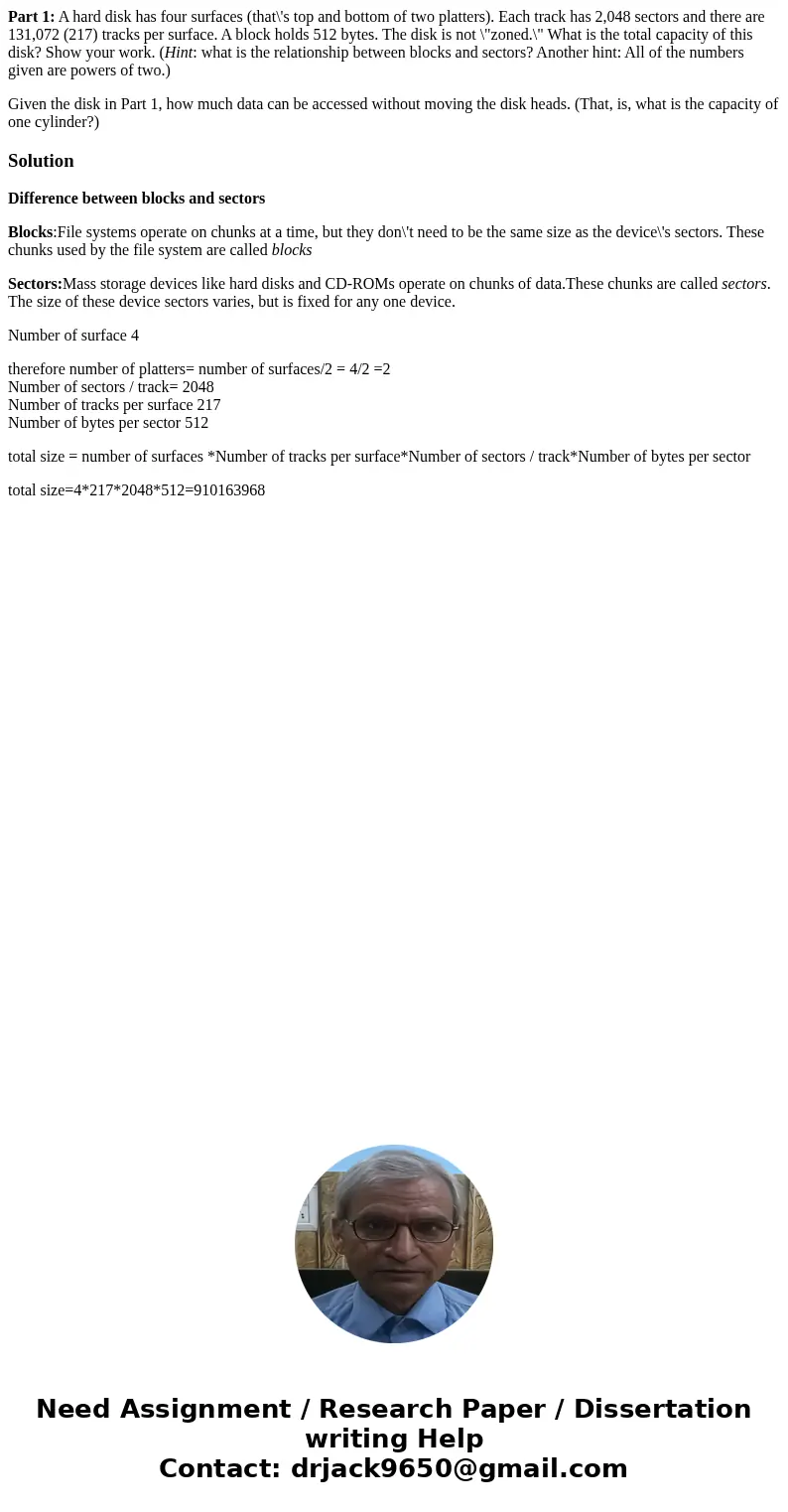Part 1 A hard disk has four surfaces thats top and bottom of
Part 1: A hard disk has four surfaces (that\'s top and bottom of two platters). Each track has 2,048 sectors and there are 131,072 (217) tracks per surface. A block holds 512 bytes. The disk is not \"zoned.\" What is the total capacity of this disk? Show your work. (Hint: what is the relationship between blocks and sectors? Another hint: All of the numbers given are powers of two.)
Given the disk in Part 1, how much data can be accessed without moving the disk heads. (That, is, what is the capacity of one cylinder?)
Solution
Difference between blocks and sectors
Blocks:File systems operate on chunks at a time, but they don\'t need to be the same size as the device\'s sectors. These chunks used by the file system are called blocks
Sectors:Mass storage devices like hard disks and CD-ROMs operate on chunks of data.These chunks are called sectors. The size of these device sectors varies, but is fixed for any one device.
Number of surface 4
therefore number of platters= number of surfaces/2 = 4/2 =2
Number of sectors / track= 2048
Number of tracks per surface 217
Number of bytes per sector 512
total size = number of surfaces *Number of tracks per surface*Number of sectors / track*Number of bytes per sector
total size=4*217*2048*512=910163968

 Homework Sourse
Homework Sourse